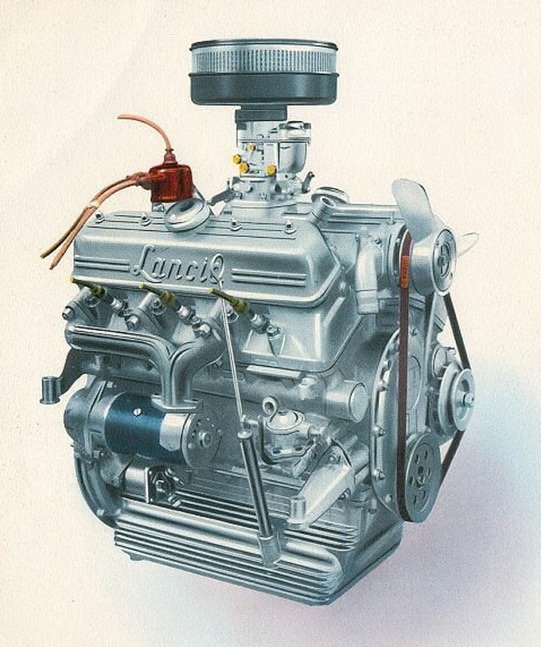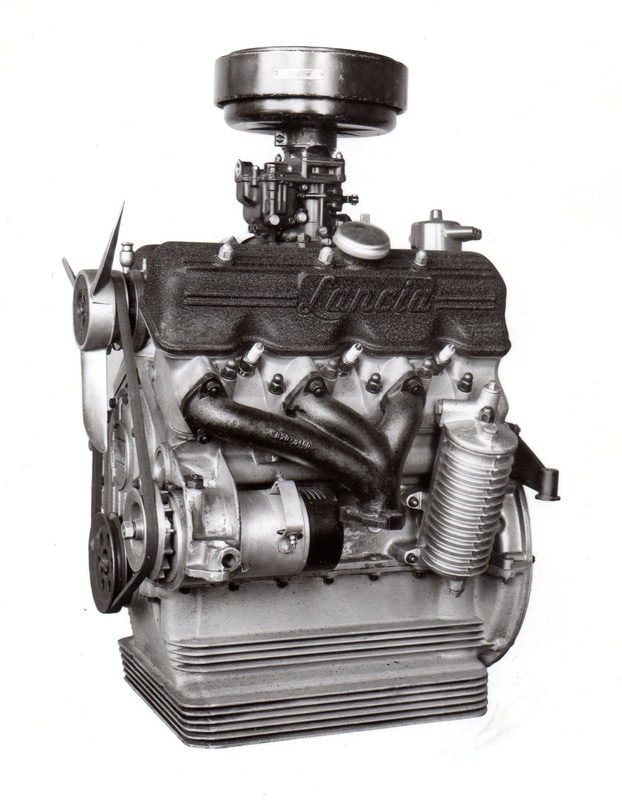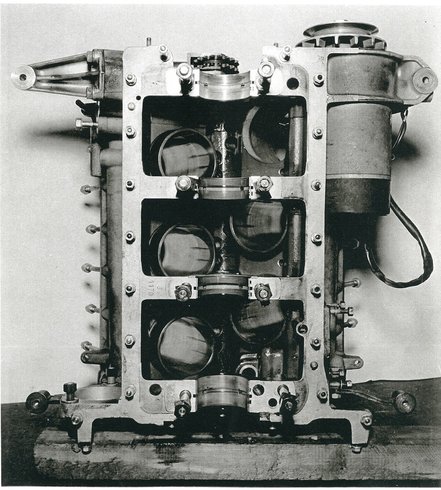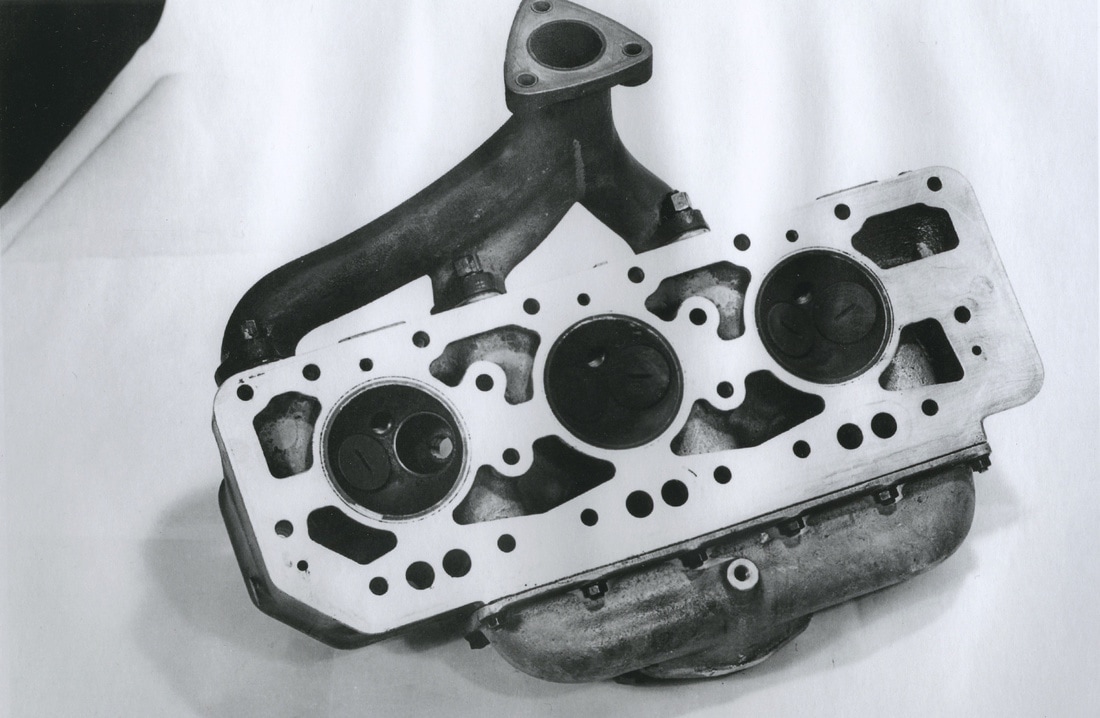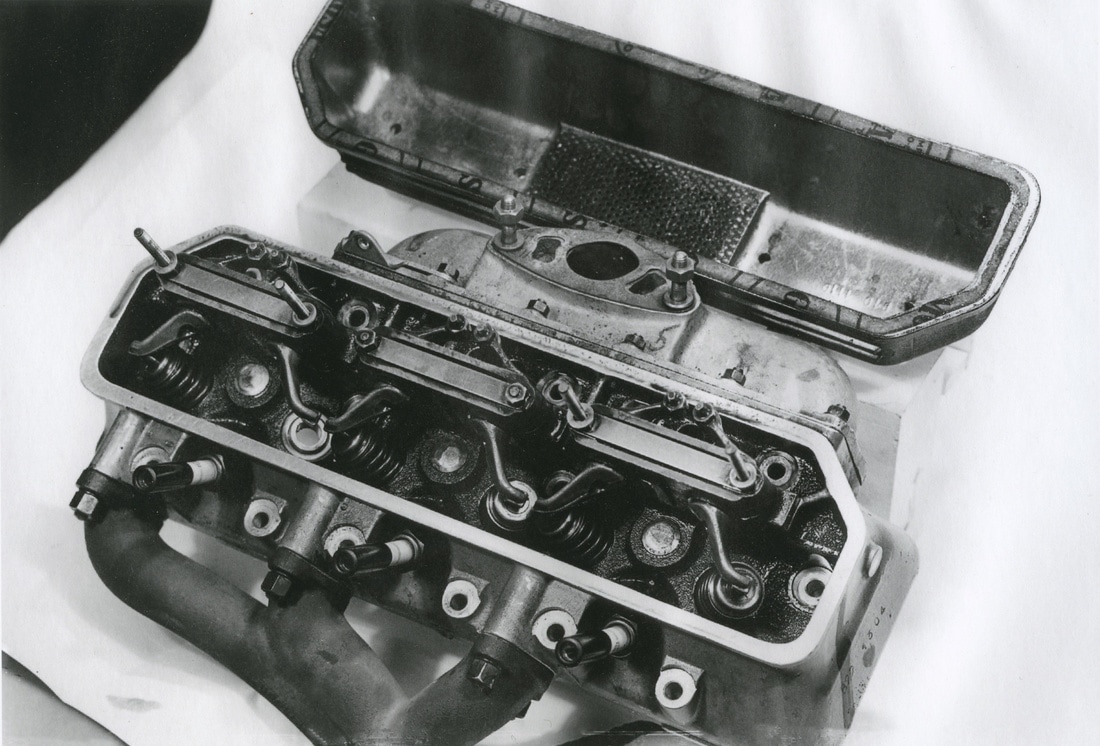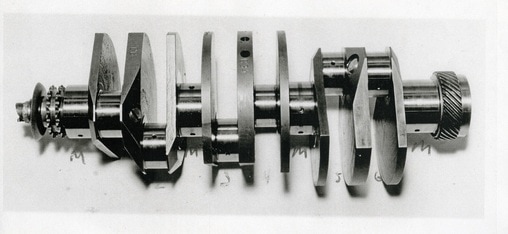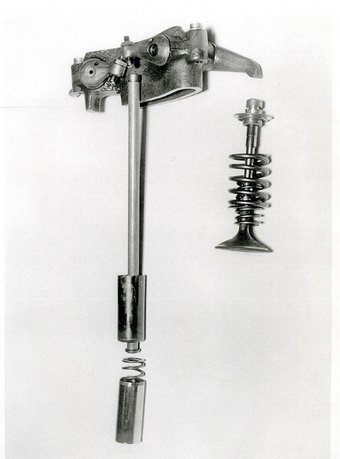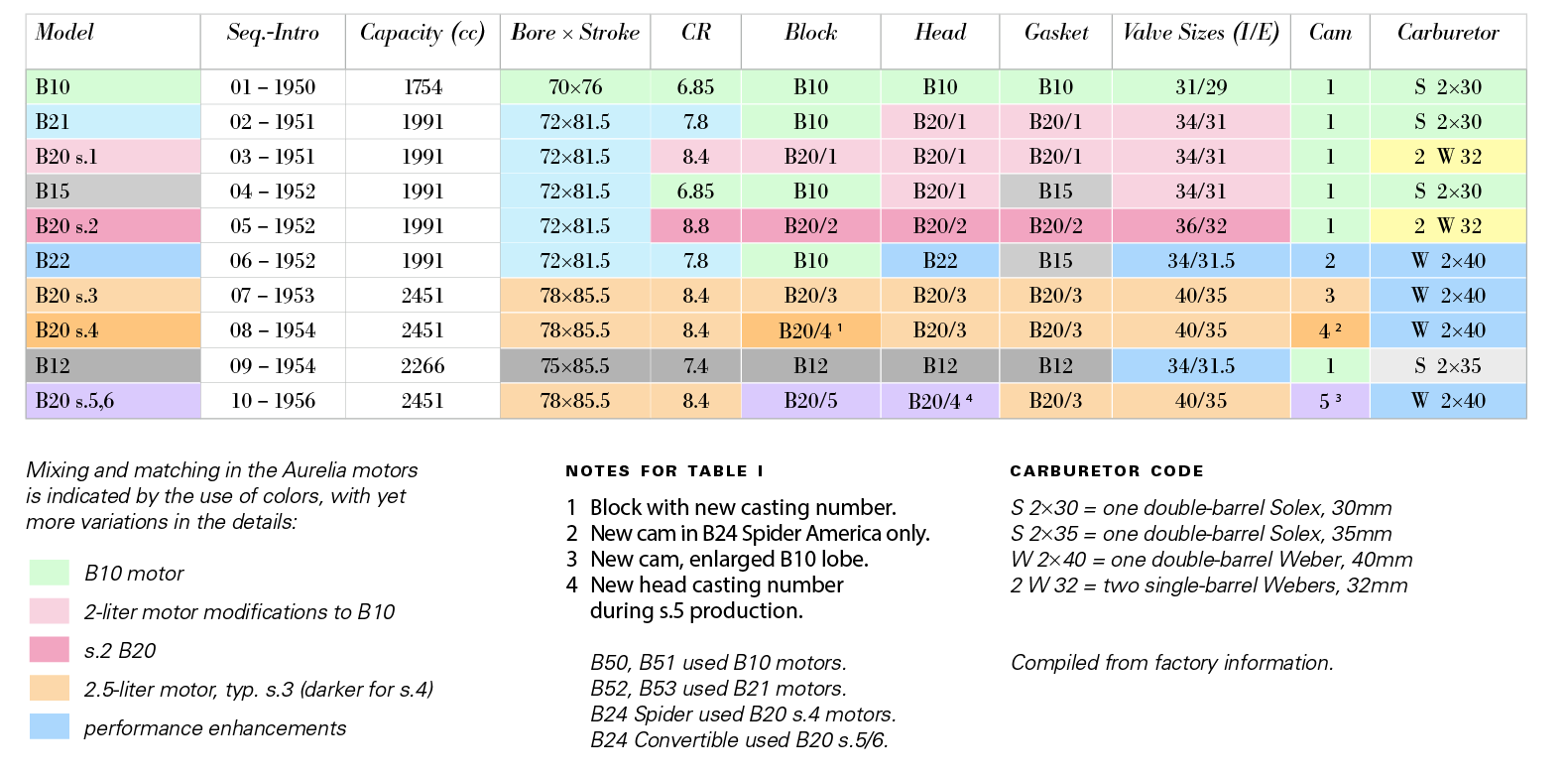|
|
EngineThe Aurelia engine was the first production V6. It was developed first as a prototype, with its design started by Francesco De Virgilio in 1943, with a 1.5 liter engine running in 1945. The production model was closely related to this, and introduced as 1754cc V6 in the the B10 sedan. All the subsequent Aurelia motors were developed from that origin, as the motor was continually developed throughout its life.
The Aurelia featured a fundamental breakthrough achieved by De Virgilio for Lancia in his solution to the crankshaft, as the V6 had previously been thought unworkable due to the balancing issues. His breakthrough, more extensively discussed in The Book, was to arrange the crankpins in a particular sequence and order so that two of the major and conflicting balancing terms cancelled each other out through design, leaving the remaining issues readily addressed. This solution was used for all the Aurelias, and indeed, is still fundamentally used to this day in all 60 degree V6 motors. With balancing issues resolved, the Aurelia crankcase and block were without major internal forces and able to be lightweight aluminum for a minimal engine mass. The general design remained unchanged in all the different versions, even as practically everything was revised in detail. Different displacements included 1991cc, used in the B21 and B22 sedans and the early B20 coupes, 2266cc used in the B12 sedan, and 2451cc for the later B20 coupes and all the B24 open cars. In addition to displacement, there weretoher changes: the valve train was redesigned, with “skewed valves” introduced for the 2-liter motor in the B20 s.2, and then adopted for all 2.5-liter motors. Camshafts, heads, crankshafts and blocks were all revised to produce a complex development history. Unlike more rational programs, the Aurelia motor was improved in many different ways, with parts and pieces changed and interspersed between many versions. These engine changes are summarized below and on the engine map following:
|
